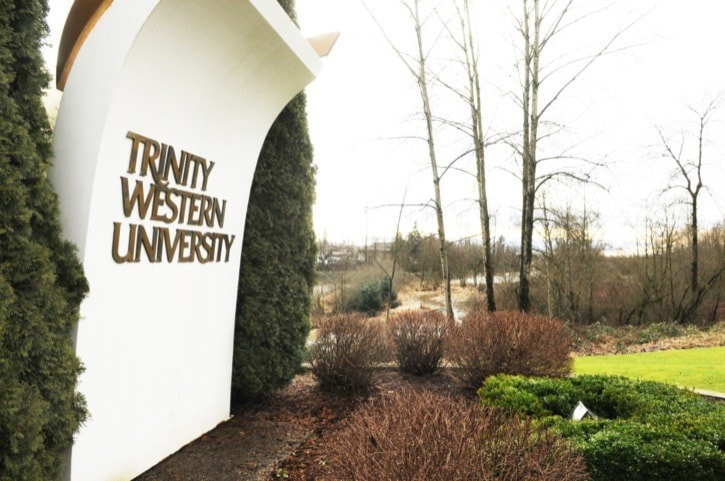The housing development that was part of the Jan. 23 public hearing is crucial to Trinity Western University’s goal of establishing a ‘university district.’
According to a report to Township council, the objective of a university district “is to promote long term prosperity of the university with diverse uses with strong links between the academic and [to] support uses for the primary benefit of the university.”
The Wall Financial Corporation’s application to amend Bylaw 4900 supports the residential component of a university district which Trinity envisions to be a “high quality compact and complete integrated university community with a diversity of learning, recreational, cultural, employment and housing opportunities.”
Wall’s application to rezone 13.5 acres of agricultural land has the tentative approval of the Agricultural Land Commission, but a host of speakers at a public hearing on Jan. 16 and 23 had plenty to say against it.
Concern was expressed about the further erosion of farmland, the heightened fear that there will be flooding, damage to the Salmon River, and traffic issues. Questions were asked about which schools children would attend.
Among the speakers were Hank Der who asked why Trinity would not consider establishing satellite campuses, and Rhys Griffiths who urged the private Christian school to build up, not out.
Dennis Townsend questioned why Trinity needed to expand in the first place.
Pointing out that the current student enrolment of 2,900 is only 84 more than last year, Townsend said that “This is not a business that is growing exponentially.”
Townsend submitted his research report to council members.
Using a Google Earth map, Townsend showed what he believes to be sufficient land within Trinity’s 157 acres for more housing and stores.
“And they claim to be able to raise millions . . . they can quite adequately deal with their needs on their own property,” Townsend said.
He noted that the Township will receive 52 acres of land for conservation. However, that land is currently generating taxes which will cease when the municipality owns it.
Townsend called the proposal “spot growth at its worst (and) mass density on ALR land.”
Residential development is proposed on the Wall property at 22415 72 Ave. at the northeast corner of Highway 10 and Glover Road, and on part of the three parcels on Glover Road and Labonte Crescent.
Several residents told council of their concern about traffic issues, especially at the intersection where 72 Avenue, now a narrow country road, meets 232 Street at the Highway 1 interchange.
To improve that intersection, Townsend said, would likely cost $1 million, and there would be further expense to taxpayers to acquire land along Highway 10 to improve the junction at 72 Avenue.
The proposal to build 67 single family houses on the 13.5 acres includes 18 coach houses which Trinity hopes would become affordable housing for its students.
“To try and bring coach houses into this nightmare under the auspices it will open cheap rental housing for students of Trinity Western is unconscionable,” Townsend said.
Townsend’s report to council included TWU president Jonathan Raymond’s report to the school’s board of directors, in which Raymond focuses on the 50th anniversary campaign that aims to raise $36 million.
The thrust of the campaign is to “build community capacity and building accessibility,”
